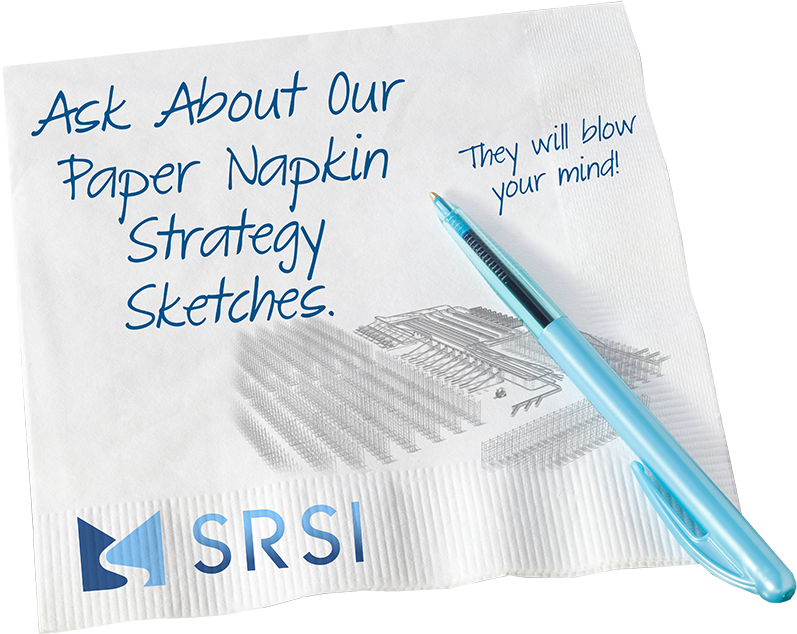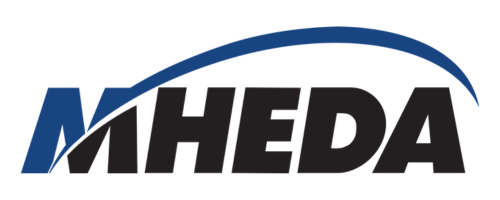Solving Challenging Problems With ASRS
Automated Storage and Retrieval Systems
Automated Storage and Retrieval Systems (AS/RS)
Automated Storage and Retrieval Systems (AS/RS) are computer-controlled systems that automatically place and retrieve loads from set storage locations in a facility with precision, accuracy and speed. They are designed for automated storage and retrieval of parts and items in manufacturing, distribution, retail, wholesale and institutions. Originating in the 1960s, AS/RS initially focused on heavy pallet loads. With the evolution of technology, the handled loads have become smaller.
Retrieval of items is accomplished by specifying the item type and quantity to be retrieved. The computer determines where in the storage area the item can be retrieved from and does the retrieval. It directs the machine to the location where the item is stored and manages the machine to deposit the item at a location where to be picked up.
Automated Guided Vehicles
A system of conveyors and or automated guided vehicles are sometimes part of the AS/RS system. These take loads in and out of the storage area and move them to the manufacturing floor or loading docks. When you want to store items, the tote (or tray) is placed at an input station for the system. It is followed by information and/or inventory input into the computer terminal.
After that, the AS/RS system moves the load to the storage area, determines the location for the item, and stores the load. As items are stored into or retrieved from the racks, the computer updates its inventory accordingly.
Having an ASRS in a warehouse includes multiple benefits such as: improved overall throughput, fast-paced order turnaround, improved labor retention and resiliency, increased high storage density, and increased floor space.
Within the storage, items can be placed on trays or hang from bars. These items are attached to chains/drives in order to move up and down. The equipment required for an AS/RS includes a storage & retrieval machine (SRM) that is used for rapid storage and retrieval of material. SRMs are used to move loads vertically or horizontally. The retrieval system can also move laterally to place objects in the correct storage location.
The trend toward just-in-time production often requires sub-pallet level availability of production inputs. Making retrieval system ASRS a much faster way of organizing the storage of smaller items next to production lines.
The Material Handling Institute (MHI) is the nation’s largest material handling, logistics, and supply-chain association. Their definition of AS/RS is a variety of computer-controlled methods for automatically depositing and retrieving loads to and from defined storage locations. Amongst the AS/RS environment these technologies are found: Horizontal Carousels, Vertical Carousels, Vertical Lift Modules, and Robotic Storage and Retrieval Systems. Each technology has its unique set of benefits and disadvantages.
Advantages of ASRS
- ASRS technologies can deliver upwards of 400 donor totes to a single operator in an hour.
- Enables you to turnaround orders far quicker than standard methods of picking due to inherent rate increases, along with its ability to facilitate quicker movement throughout a facility.
- Proven to help retain labor by providing operators with an alternative to walking miles per day and allow for more comfort and efficiency at a workstation.
- Can significantly increase conventional storage when compared to standard methods.
SHUTTLE TECHNOLOGY
Another AS/RS technology is known as shuttle technology. In this technology the horizontal movement is made by independent shuttles. They each operate on one level of the rack while a lift at a fixed position within the rack is responsible for the vertical movement. By using two separate machines for these two axes, the shuttle technology is cost effective for high-rate solutions.
These systems are used either as stand-alone units or in integrated workstations called pods or systems. They are usually integrated with various types of pick-to-light* systems and use either a light or LED on racks or shelves to indicate pick locations for basic usage or inventory management software.
These systems are ideal for increasing space utilization up to 90%, productivity levels by 90%, accuracy to 99.9%+ levels and throughput up to 750 lines per hour/per operator or more depending on the configuration of the system.
Mini load AS/RS share the same characteristics of a shuttle whereas they store product similarly, however, it is a single retrieval shuttle. While it decreases cost, it lowers the throughput rate at its expense.
Also Note:
*This technology is best used for split case order fulfillment. There are different types of Goods to Person (GTP) technology, but the principle is the same when an automated storage system delivers Stock Keeping Units (SKU) to a stationary pick station where the operator fills discrete orders.
Types
Right Angle Fast Transfer (RAFT)
RAFT is capable of having its robots maneuver horizontally and vertically, combining the density of AutoStore, with some of the benefits of a more traditional shuttle system. The result is a technology that densely stores pallets and brings them to any position on the exterior of the grid structure to be picked. RAFT’s pallet storage technique allows for an easy integration with conveyors and robotics, or with more traditional manual picks via an individual or fork truck.
Vertical Lift Modules (VLMs)
Operate by placing products in configurable trays that are then stored on top of each other in a vertical cabinet. The trays are then brought to the GTP user at the workstation opening. An easy way to grasp VLMs is to think of them as giant vending machines capable of housing large amounts of product amongst a column of trays.
Mini-Load Systems (ASRS for Boxes, Totes and Trays)
The Mini Load ASRS is a high-density storage system designed for increased productivity within a compact footprint. This system is ideal for storing, moving, and fulfilling orders for small or irregular goods in boxes, totes, and trays and includes ergonomic and safety features for easy work and maintenance. Notable advantages include easy expandability, increased safety by reducing operator fatigue, and smooth, quiet operation.
BEGIN IMPROVING YOUR OPERATION EFFICIENCY AND COST
Contact us today to find the right conveyor solution for your business.
SCHEDULE A CALL WITH US TODAY1) What industries can utilize ASRS systems?
ASRS or automated shelving systems are widely used in manufacturing, distribution, retail, wholesale, and institutional sectors to improve storage efficiency and streamline operations.
2) What types of items can your ASRS system store?
Our ASRS systems can handle a wide range of items, from heavy pallets to smaller products in trays, totes, or boxes, helping you meet specific storage needs.
3) Can ASRS systems be integrated with automated guided vehicles (AGVs)?
Automated storage and retrieval systems can work seamlessly with AGVs or conveyor systems to transport loads between storage locations, manufacturing floors, and loading docks.
4) How do your ASRS systems increase labor efficiency?
ASRS reduces the need for manual walking and lifting, allowing operators to work comfortably at stationary pick stations, thereby increasing productivity and retention.
 Skip to main content
Skip to main content



